Abstract
Certain sera from individuals receiving large doses of penicillin have been found to contain a factor which can cause agglutination of human red cells sensitized with penicillin. Such sera were detected by a preliminary white tile screening technique and subsequently titrated in tubes.
The haemagglutinating factor appeared to be heat stable (56.0° for 6 hours at least) and active over a pH range of approximately 4.8 to 9.0. In the presence of complement certain strongly positive sera caused haemolysis of the red cells. The addition of penicillin inhibited the haemagglutination reaction but this effect was reversible by the addition of penicillinase. Certain agglutinating sera gave positive complement fixation tests but no visible precipitates were obtained by tube or double diffusion agar gel techniques. Attempts to obtain active eluates from agglutinated sensitized cells were unsuccessful. It was also found that the haemagglutinating factor did not appear to have any inhibiting effect on the bactericidal action of penicillin.
Starch-gel electrophoresis of positive sera demonstrated haemagglutinating activity in two pre-albumin zones. One such zone, pre-albumin-2, has been shown to be acidic-alpha-1-glycoprotein whereas the nature of pre-albumin-1 remains obscure. In twenty-two of twenty-three sera so tested agglutinating activity was confined to these two zones. In the remaining serum, in addition to activity in the two pre-albumin zones, positive agglutination of sensitized cells was also brought about by the gamma-globulin fraction, and this serum was the only one which gave a positive antiglobulin test. The interpretation of these electrophoretic findings is not altogether clear and requires further elucidation.
Full text
PDF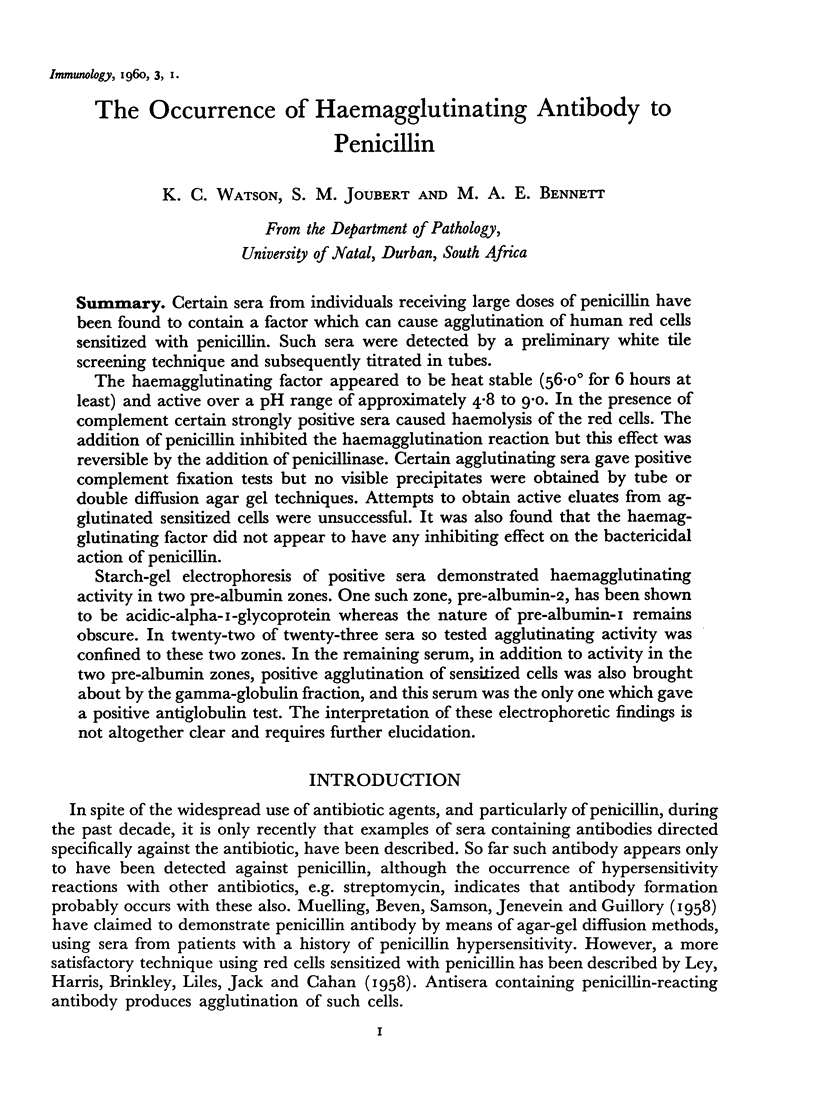
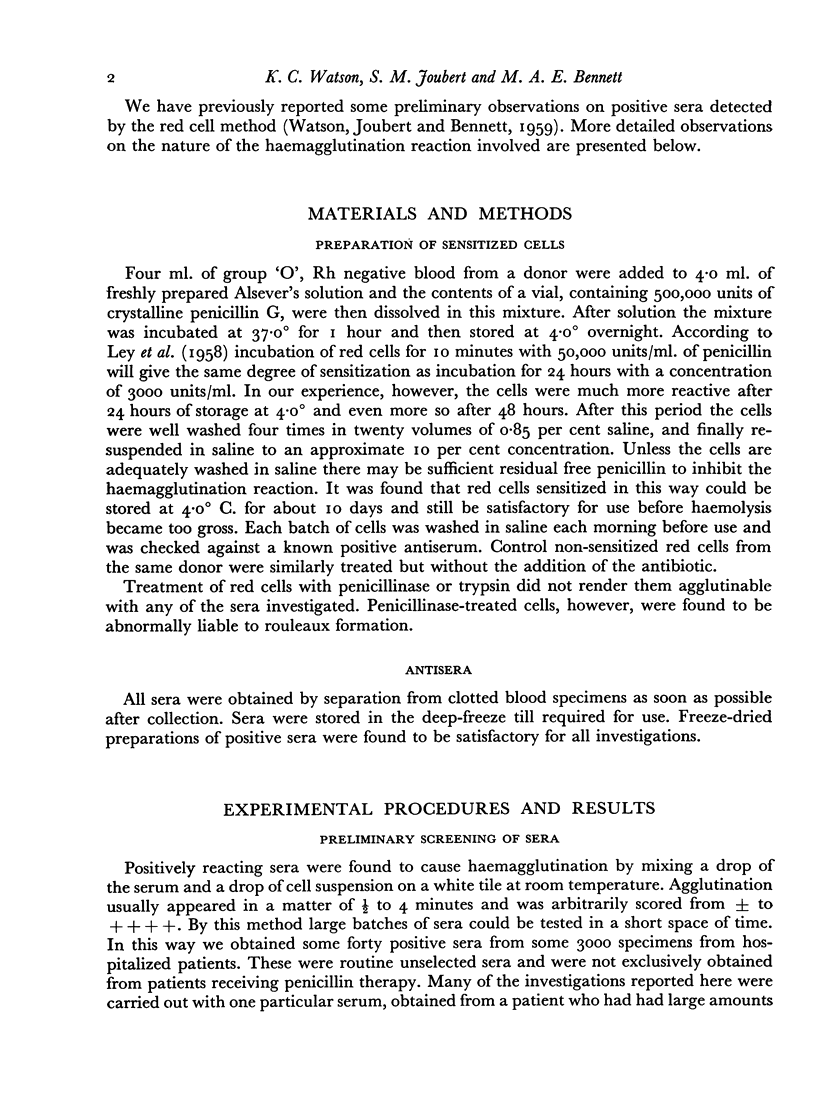
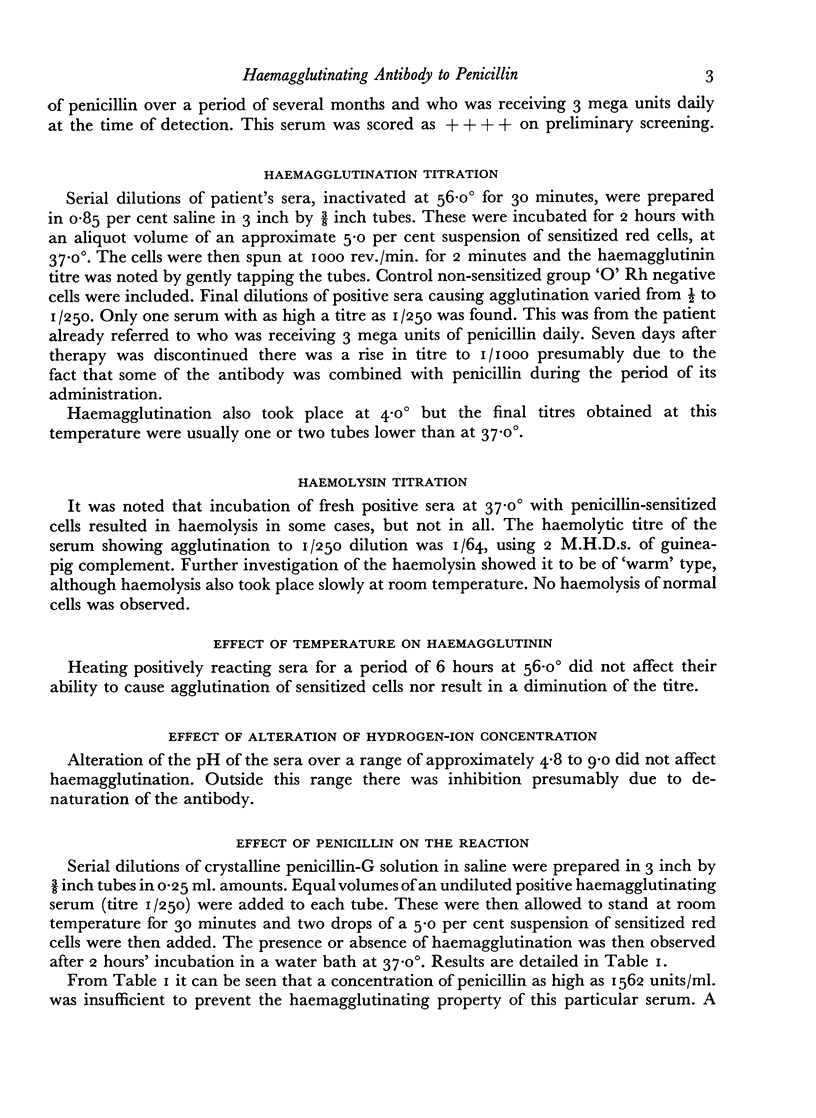
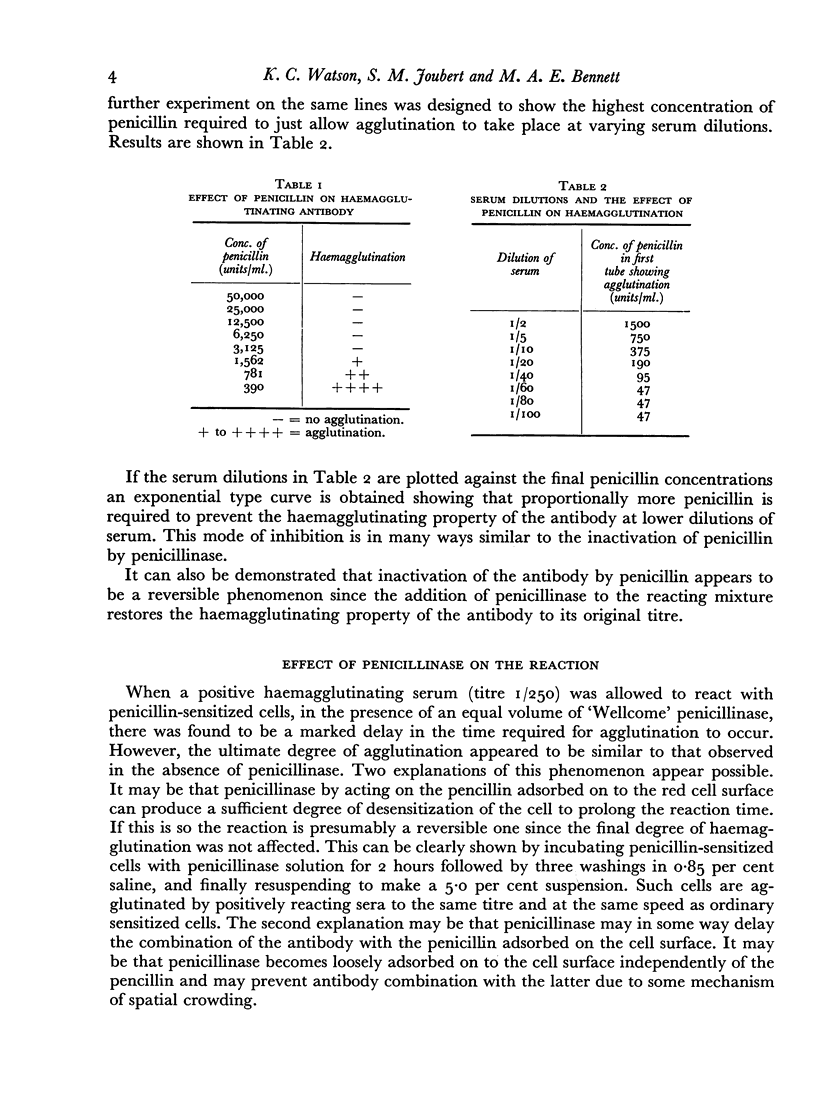
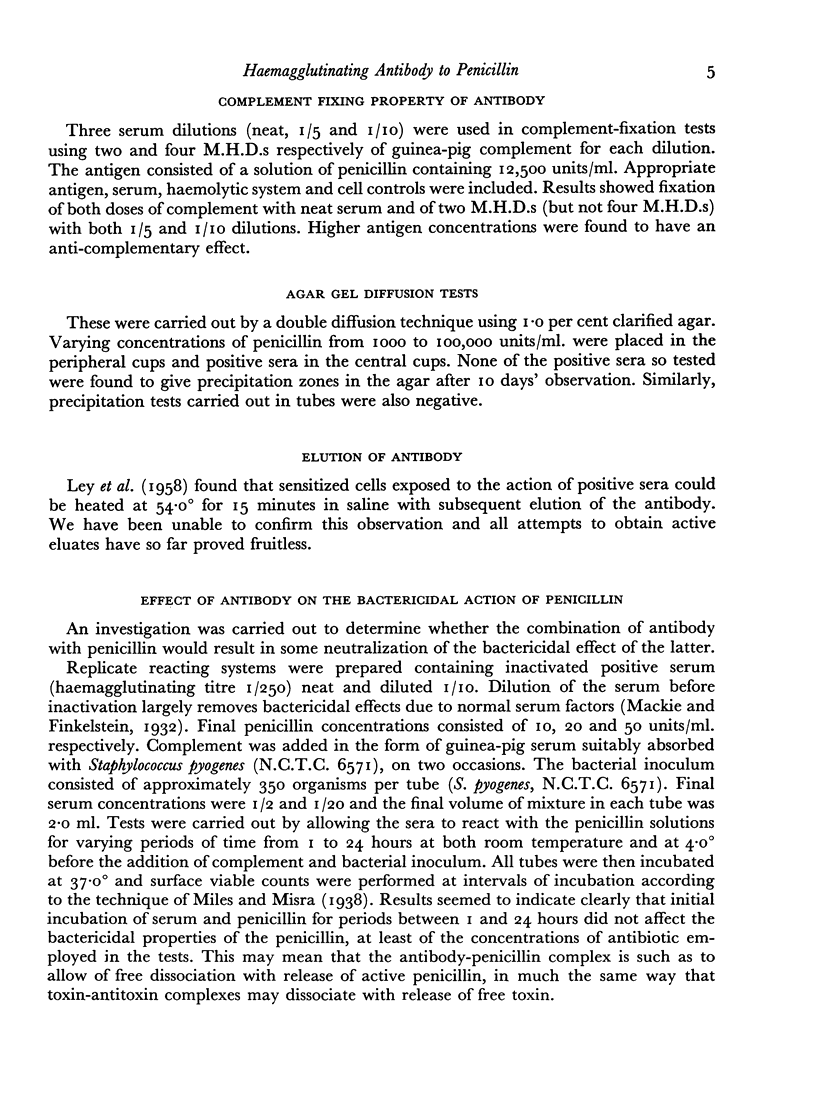
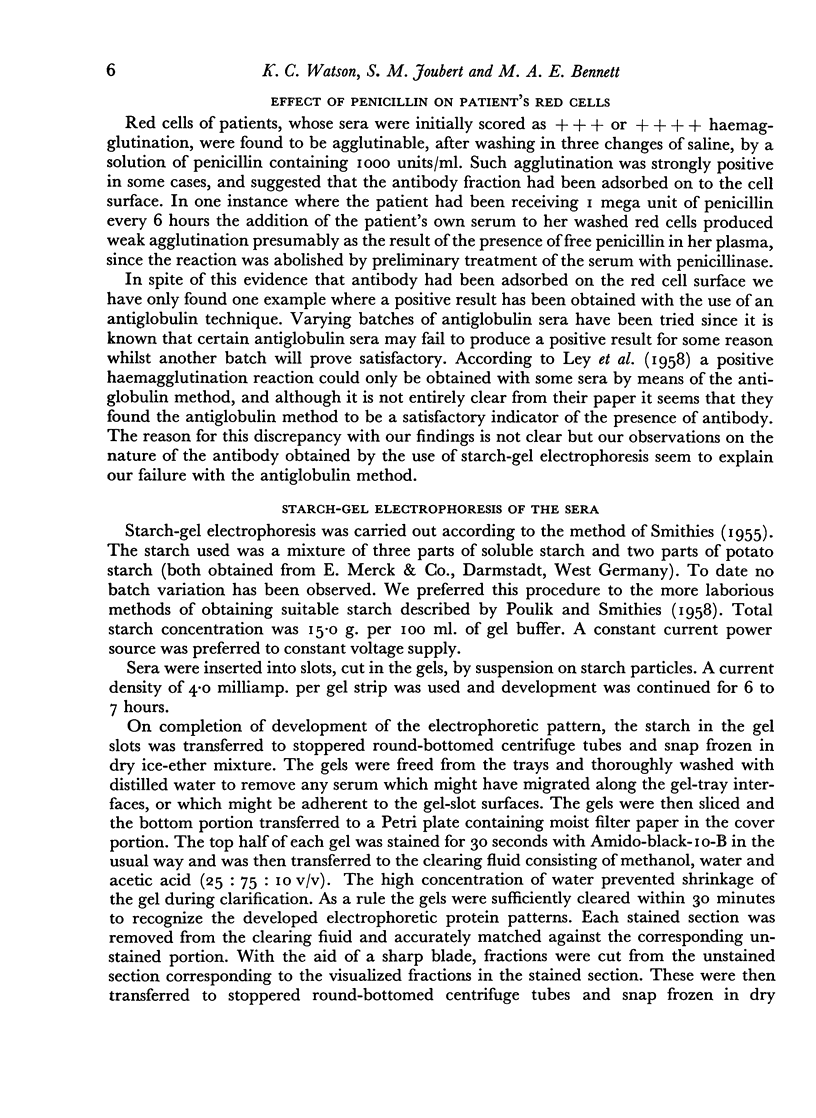
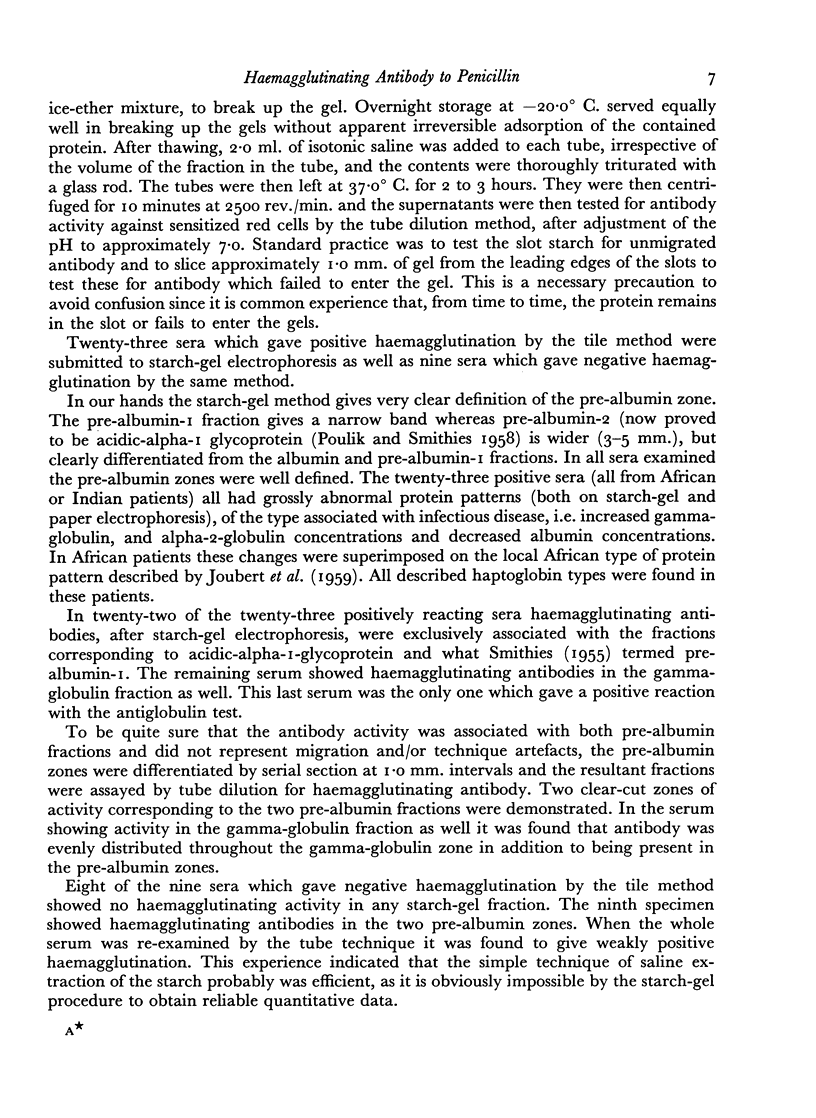
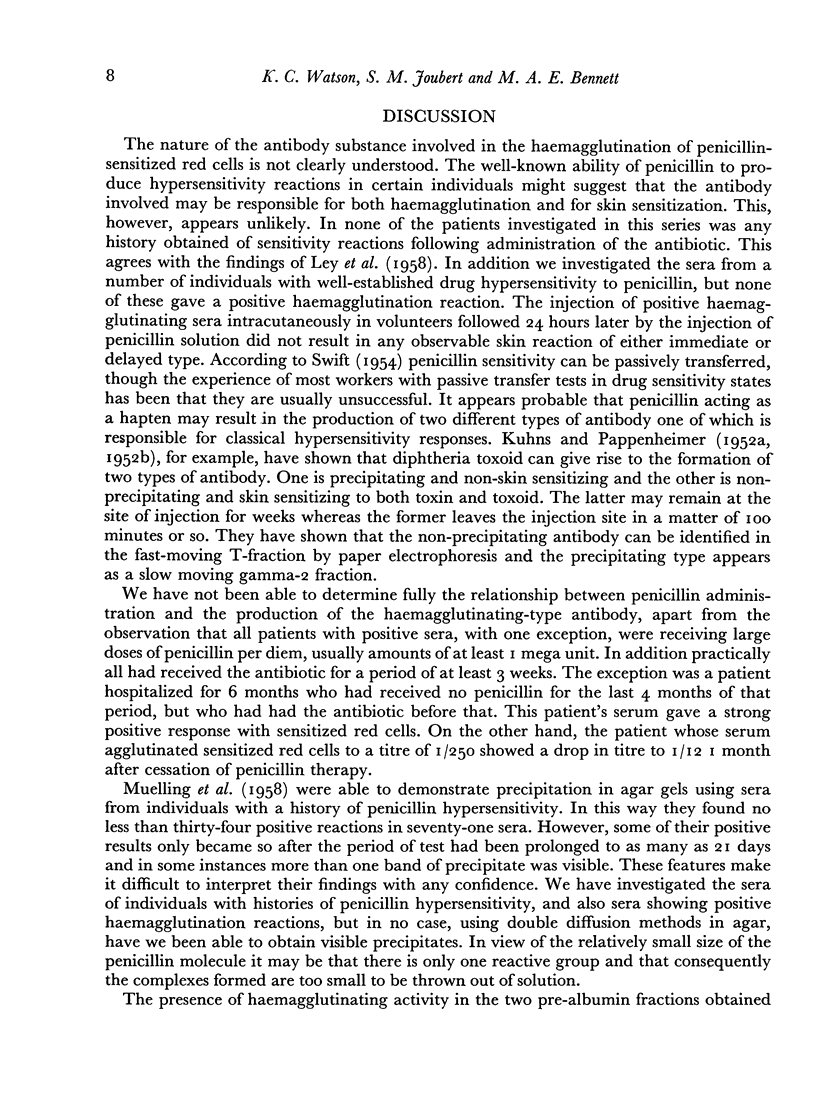
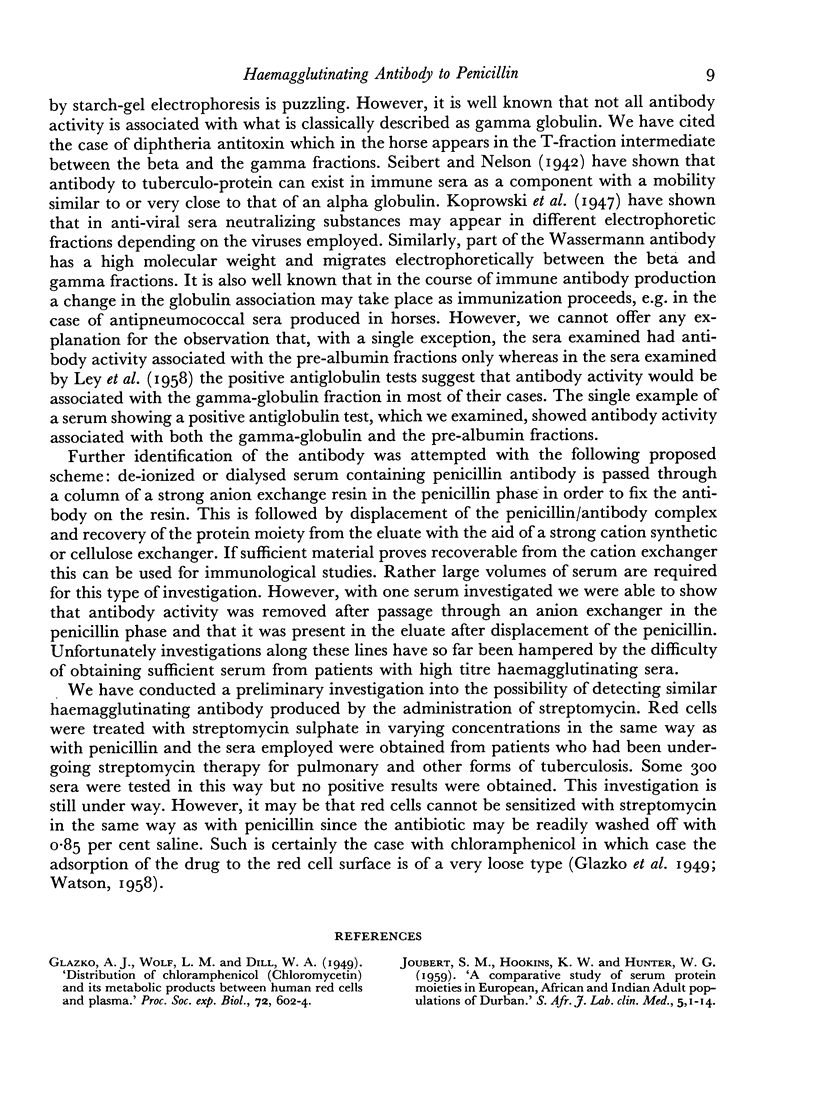
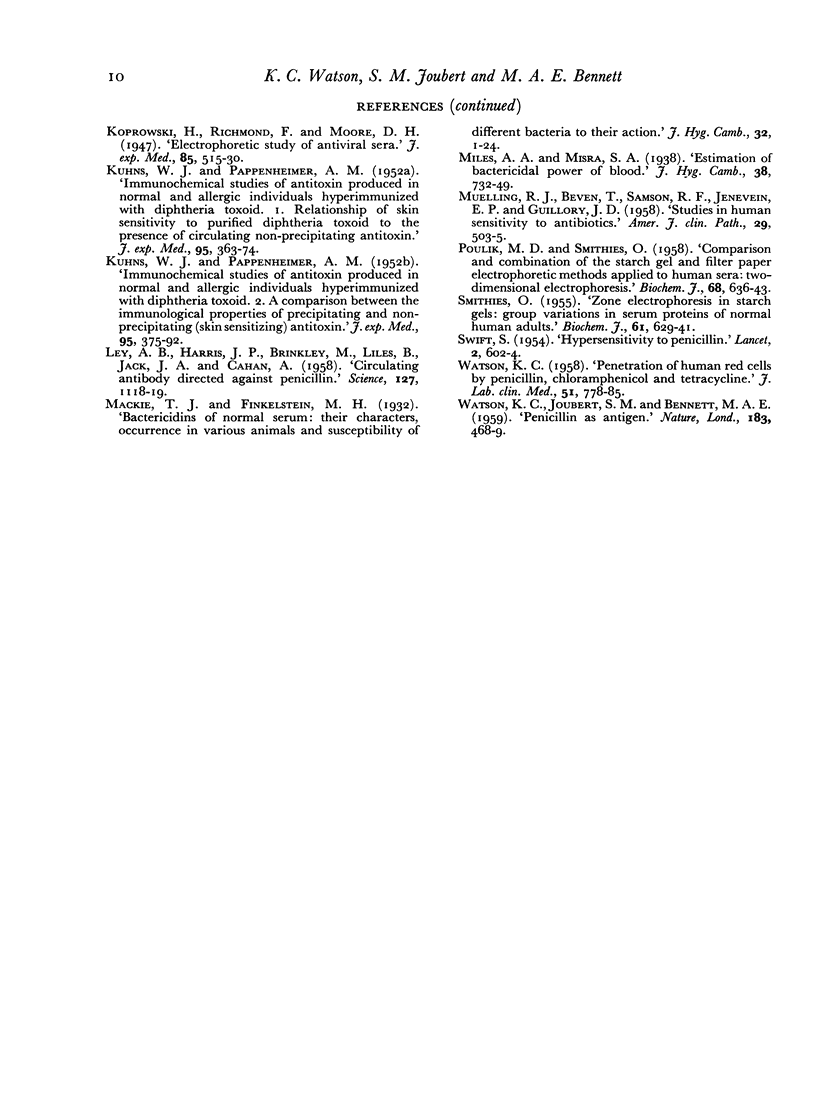
Selected References
These references are in PubMed. This may not be the complete list of references from this article.
- GLAZKO A. J., WOLF L. M., DILL W. A. Distribution of chloramphenicol (chloromycetin) and its metabolic products between human red cells and plasma. Proc Soc Exp Biol Med. 1949 Dec;72(3):602–604. doi: 10.3181/00379727-72-17512. [DOI] [PubMed] [Google Scholar]
- KUHNS W. J., PAPPENHEIMER A. M., Jr Immunochemical studies of antitoxin produced in normal and allergic individuals hyperimmunized with diphtheria toxoid. I. Relationship of skin sensitivity to purified diphtheria toxoid to the presence of circulating, non-precipitating antitoxin. J Exp Med. 1952 Apr;95(4):363–374. doi: 10.1084/jem.95.4.363. [DOI] [PMC free article] [PubMed] [Google Scholar]
- MUELLING R. J., Jr, BEVEN T., SAMSON R. F., JENEVEIN E. P., GUILLORY J. D. Studies in human sensitivity to antibiotics. I. Testing for precipitins after reaction to antibiotics. Am J Clin Pathol. 1958 May;29(5):503–505. doi: 10.1093/ajcp/29.5_ts.503. [DOI] [PubMed] [Google Scholar]
- POULIK M. D., SMITHIES O. Comparison and combination of the starch-gel and filter-paper electrophoretic methods applied to human sera: two-dimensional electrophoresis. Biochem J. 1958 Apr;68(4):636–643. doi: 10.1042/bj0680636. [DOI] [PMC free article] [PubMed] [Google Scholar]
- SMITHIES O. Zone electrophoresis in starch gels: group variations in the serum proteins of normal human adults. Biochem J. 1955 Dec;61(4):629–641. doi: 10.1042/bj0610629. [DOI] [PMC free article] [PubMed] [Google Scholar]
- SWIFT R. D. Hypersensitivity to penicillin. Lancet. 1954 Sep 18;267(6838):602–604. doi: 10.1016/s0140-6736(54)90392-x. [DOI] [PubMed] [Google Scholar]
- WATSON K. C., JOUBERT S. M., BENNETT M. A. Penicillin as an antigen. Nature. 1959 Feb 14;183(4659):468–469. doi: 10.1038/183468a0. [DOI] [PubMed] [Google Scholar]
- WATSON K. C. Pentration of human red cells by penicillin, chloramphenicol, and tetracycline. J Lab Clin Med. 1958 May;51(5):778–785. [PubMed] [Google Scholar]


